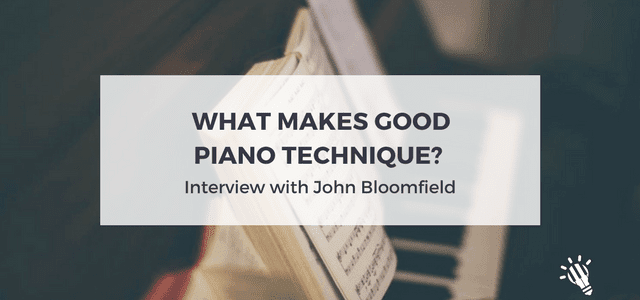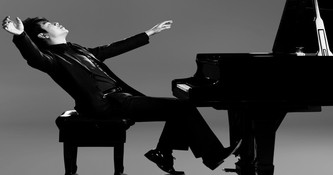 Interested in Piano Technique?
Interested in Piano Technique?I don’t know about you, but I find all the ins and outs of piano technique fascinating.
I love that Glenn Gould could sit well below the keyboard in a position that most teachers would denounce as pretty appalling and still achieve incredible performances and be revered for evermore.
I love the flat-fingered and barely-moving but perfect technique of Horowitz that wowed audiences for years.
I love that UK organist Richard Hill (whom I heard perform in Australia at the end of last year and noted as one of the world’s best organists) played amazingly but with a collapsed pinky that most teachers would find hard to ignore (hard to see in this video):
No doubt you’ve seen other competent performers play with raised pinkies or overly-curled fingers – something that, as a teacher, you would have corrected (and probably spent a lot of time correcting!).
How is it that so many different approaches to technique can have such great outcomes? Why are piano teachers so convinced that there should only be one way to train a student? Why do we pounce on weak joints and flat fingers and odd seating positions when it doesn’t necessarily have an impact on the sound?
As an example, I was discussing with my staff at the end of last year how thumb movement under the hand (eg. in scales) should be taught.
Should we teach them to start moving the thumb under the hand immediately after it has played, should we focus on rotation to keep the thumb in position or should we just let the movement of the hand up the piano at higher speeds dictate the new position of the thumb (eg. Chopin Etude Op 10 no 1)?
Of course, each teacher had their own opinion, most often based on how they themselves were taught.
Here are a couple of examples of these different approaches.
Which is the right way? How long is a piece of string!?
Of course, there is no “right way” when it comes to teaching piano technique because everyone is different, hands are different and teaching backgrounds are varied.
However, there are some standard practices to which pianists and teachers have generally agreed over the years and which seems to produce an effective outcome in performance. For example, leaving Gould aside, there is a generally accepted convention about how to sit for greatest control and mobility and 99% of pianists seem to follow this convention.
 It’s also generally agreed that the last joint of fingers should be strong and not bend backwards to achieve the greatest control over tone and touch. Similarly, it is agreed that the hand should keep a naturally curved shape when playing.
It’s also generally agreed that the last joint of fingers should be strong and not bend backwards to achieve the greatest control over tone and touch. Similarly, it is agreed that the hand should keep a naturally curved shape when playing.
But after that, things become open to interpretation: are scales and arpeggios important? (See my post Are Scales Irrelevant? for more thoughts on this) How do you move the thumb? What if your student is flat fingered? How do you play Chopin Etudes without pain and injury? etc. etc.
I think the Chopin Etude example is a great one as I myself have struggled managing the technical aspects of Op 10 No 1. How do you play such widely spaced arpeggios at speed and with volume for an extended time without breaking your hands? How do you play long runs of double octaves without pain?
With all the above in mind, I was excited to interview Taubman teacher and co-founder of the Golandsky Institute, John Bloomfield, who is presenting this weekend at the Taubman Workshops in Brisbane. One of the lectures being presented is Edna Golandsky herself on “Unravelling the Chopin Etudes”.
Here’s an interview I just did with keynote presenter, John Bloomfield about piano technique what to expect this weekend (please excuse the quality of my microphone):
If you’re not going to be in Brisbane, you can also get online access to the workshops until March 31. Check out the full details here.
Subscribers can get $10 off 1-day registration and $20 off 2-day registrations using the codes on the event page.
How do you teach thumb-under in scales? Have you experienced pain in your playing? What scales and exercises do you use? Got any great piano technique tips? Leave a comment below.
